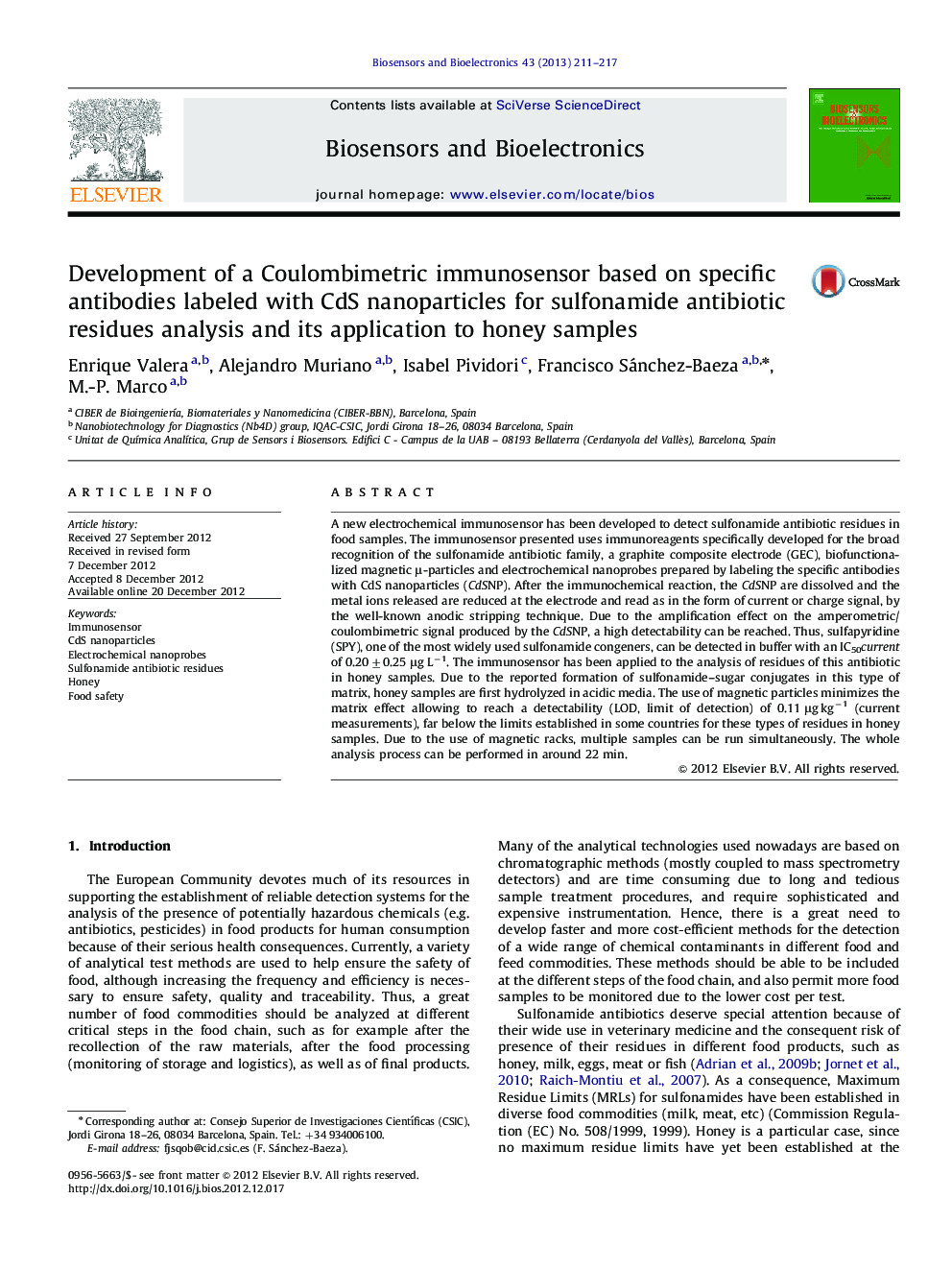| Article ID | Journal | Published Year | Pages | File Type |
|---|---|---|---|---|
| 866849 | Biosensors and Bioelectronics | 2013 | 7 Pages |
A new electrochemical immunosensor has been developed to detect sulfonamide antibiotic residues in food samples. The immunosensor presented uses immunoreagents specifically developed for the broad recognition of the sulfonamide antibiotic family, a graphite composite electrode (GEC), biofunctionalized magnetic μ-particles and electrochemical nanoprobes prepared by labeling the specific antibodies with CdS nanoparticles (CdSNP). After the immunochemical reaction, the CdSNP are dissolved and the metal ions released are reduced at the electrode and read as in the form of current or charge signal, by the well-known anodic stripping technique. Due to the amplification effect on the amperometric/coulombimetric signal produced by the CdSNP, a high detectability can be reached. Thus, sulfapyridine (SPY), one of the most widely used sulfonamide congeners, can be detected in buffer with an IC50current of 0.20±0.25 μg L−1. The immunosensor has been applied to the analysis of residues of this antibiotic in honey samples. Due to the reported formation of sulfonamide–sugar conjugates in this type of matrix, honey samples are first hydrolyzed in acidic media. The use of magnetic particles minimizes the matrix effect allowing to reach a detectability (LOD, limit of detection) of 0.11 μg kg−1 (current measurements), far below the limits established in some countries for these types of residues in honey samples. Due to the use of magnetic racks, multiple samples can be run simultaneously. The whole analysis process can be performed in around 22 min.
► Immunosensor based on the use of electrochemical nanoprobes and magnetic particles. ► Electrochemical nanoprobes prepared by covalently linking the antibody to CdSNP. ► Immunosensor for sulfonamide antibiotic residues in honey samples. ► The immunosensor reach a limit of detection of 0.11 μg kg−1.
